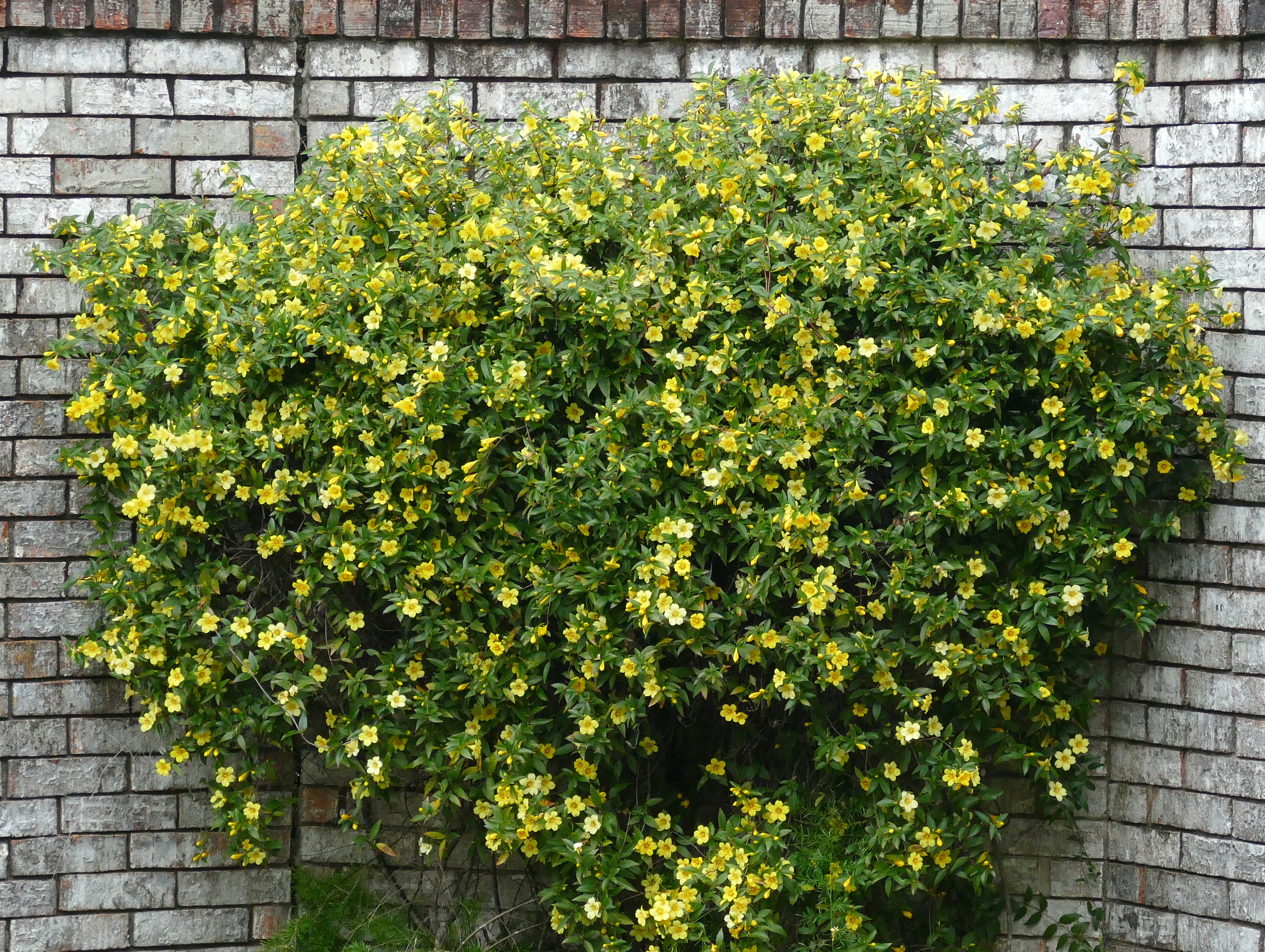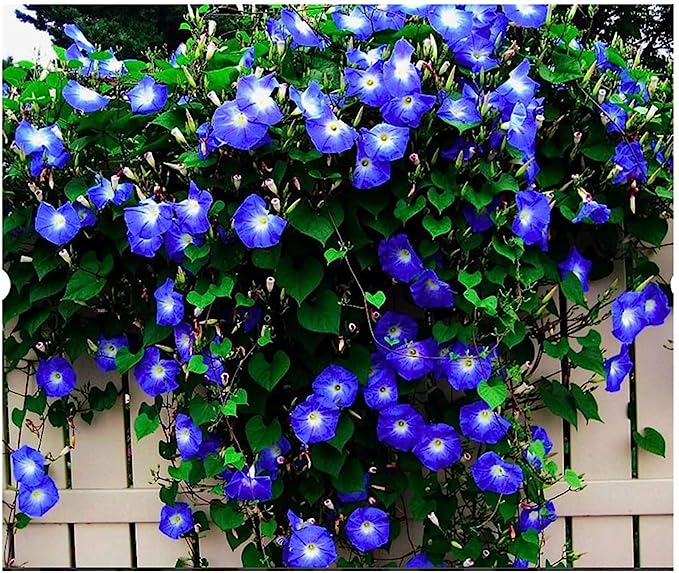Looking for a flower that climbs? Check out our list of 23 perennial & annual flowers that climb! These plants are perfect for adding vertical interest to your garden or landscape.
We’ve got you covered. Our climbing flowers include some of the most popular climbing flowers today. Start planting and enjoy your beautiful garden all season long!
Contents
- 1 Why do we love climbing flowers?
- 2 Factors that influence the growth of climbing flowers
- 3 23 Perennial & Annual Flowers that Climb
- 3.1 1. Fiveleaf Akebia (Akebia quinata)
- 3.2 2. Hybrid Clematis (Clematis hybrids)
- 3.3 3. Sweet Autumn Clematis (Clematis terniflora)
- 3.4 4. Virgin’s Bower (Clematis virginiana)
- 3.5 5. Climbing Hydrangea (Hydrangea anomala subsp. petiolaris)
- 3.6 6. Japanese Honeysuckle (Lonicera japonica)
- 3.7 7. Coral Honeysuckle (Lonicera sempervirens)
- 3.8 8. Scarlet Trumpet Honeysuckle, Brown’s Honeysuckle (Lonicera x brownii)
- 3.9 9. Silver Lace Vine, Silvervine Fleeceflower (Polygonum aubertii)
- 3.10 10. Japanese Hydrangea Vine (Schizophragma hydrangeoides)
- 3.11 11. Japanese Wisteria (Wisteria floribunda)
- 3.12 12. Chinese Wisteria (Wisteria sinensis)
- 3.13 13. Clematis (Clematis ‘Betty Corning’)
- 3.14 14. Carolina yellow jasmine (Gelsemium sempervirens)
- 3.15 15. Cardinal climber (Ipomoea × multifida)
- 3.16 16. Honeysuckle (Lonicera flava)
- 3.17 17. Trumpet honeysuckle (Lonicera sempervirens)
- 3.18 18. Mandevilla (Mandevilla ‘Red Velvet’)
- 3.19 19. Thunbergia (Thunbergia ‘Blue Glory’)
- 3.20 20. Great Bougainvillea (Bougainvillea spectabilis)
- 3.21 21. Heavenly Blue Morning Glory (Ipomoea tricolor)
- 3.22 22. Italian Bellflower, Star of Bethlehem (Campanula isophylla)
- 3.23 23. Garden Nasturtium (Tropaeolum majus)
- 4 Frequently asked questions
- 5 Summary
Why do we love climbing flowers?
Climbing flowers are perfect for adding vertical interest to your garden or landscape. They can also provide privacy and create a lovely focal point.
There are many reasons to love climbing flowers.
- They add vertical interest to your garden or landscape.
- Climbing flowers can also help unsightly camouflage objects in your yards, such as utility boxes or air conditioning units.
- And last but not least, these plants are simply beautiful!
No matter what your reason for wanting a climbing flower, you’re sure to find one on our list that suits your needs. So without further ado, let’s get started!
Factors that influence the growth of climbing flowers
With climbing flowers, there are a few important factors to consider before making your final selection. Here are a few things to keep in mind:
- Sunlight: Make sure to choose a spot in your garden with plenty of sunlight. Most climbing flowers need at least 6 hours of sun per day. Proper sunlight would help the climbing flowers on this list to meet your expectations.
- Water: Be sure to water your climbing flowers regularly, especially during the hot summer. These plants need to be kept moist but not soggy. Overwatering can lead to fungal diseases, so check the soil before watering.
- Fertilizer: Add a fertilizer specifically designed for flowers to your climbing plants every 2-3 weeks. It will help them to grow strong and healthy.
- Pruning: Prune your climbing flowers regularly to encourage new growth and remove any dead or dying branches.
- Soil: Climbing flowers also need well-draining soil. If your soil is heavy or clay-like, consider adding some organic matter to help improve drainage.
Now that you know what to look for let’s look at our list of 5 climbing flowers that are sure to add beauty to your garden or landscape!
23 Perennial & Annual Flowers that Climb
The variety of Perennial & Annual Flowers that Climb is innumerable. To help you choose the best one for your garden, we have compiled a list of our top 23 favorites.
1. Fiveleaf Akebia (Akebia quinata)
Akebia quinata, commonly known as five-leaf akebia or chocolate vine, is a fast-growing, deciduous, semi-evergreen twining vine native to China, Korea, and Japan.
It typically matures to 20-40′ long but can climb much higher on a suitable support. Its USDA hardy zone is 4-9. It is drought tolerant and does not require much water or fertilizer once it’s established.
2. Hybrid Clematis (Clematis hybrids)
The hybrid clematis is a cross between two species of clematis: the Chinese Clematis (Clematis Chinensis) and the European Clematis (Clematis vitalba). It’s a climbing vine that produces large, showy flowers in various colors.
It’s best suitable for USDA zones 4-9 and is drought tolerant. It prefers full sun but can tolerate partial shade.
3. Sweet Autumn Clematis (Clematis terniflora)
Sweet Autumn Clematis is a deciduous vine that is native to China. It is characterized by its fragrant white flowers, which bloom from July to October.
The vine is also tolerant of most soil types and climates, although it does best in full sun. With its charming flowers and vigorous growth habit, Sweet Autumn Clematis is an excellent addition to any landscape.
Its USDA hardy zone is 5-9 and is drought tolerant.
4. Virgin’s Bower (Clematis virginiana)
The Virgin’s Bower Clematis is a beautiful climbing plant native to North America. The plant leaves are dark green, and the stems are covered in small, brownish-red flowers.
It’s best suitable for USDA zones 3-9 and is drought tolerant.
5. Climbing Hydrangea (Hydrangea anomala subsp. petiolaris)
The climbing hydrangea is a deciduous vine that will lose its leaves in the fall. In the spring, it produces clusters of small white flowers that are incredibly fragrant. The flowers are followed by large green seed pods that mature in the fall.
6. Japanese Honeysuckle (Lonicera japonica)
The Japanese honeysuckle is a fast-growing vine that can reach up to 30 feet in length. It is native to China and Japan but has been introduced to North America, which is now considered an invasive species.

7. Coral Honeysuckle (Lonicera sempervirens)
The coral honeysuckle is a native North American vine that can reach up to 20 feet in length. It produces clusters of tubular, orange-red flowers that bloom from May to June. The flowers are followed by small, red berries that mature in the fall.
8. Scarlet Trumpet Honeysuckle, Brown’s Honeysuckle (Lonicera x brownii)
The Scarlet Trumpet Honeysuckle is a cross between the trumpet honeysuckle (L. sempervirens) and the Japanese honeysuckle (L. japonica). It is a fast-growing vine that can reach up to 30 feet in length.
9. Silver Lace Vine, Silvervine Fleeceflower (Polygonum aubertii)
The Silver Lace Vine is a fast-growing, deciduous vine that can reach up to 30 feet in length. It produces small white flowers that bloom from June to September. The flowers are followed by small black berries that mature in the fall.
10. Japanese Hydrangea Vine (Schizophragma hydrangeoides)
The Japanese Hydrangea-vine is a deciduous vine which produces white, lace-cap flowers that bloom from June to July. The flowers are followed by small, dark blue berries that mature in the fall.

11. Japanese Wisteria (Wisteria floribunda)
The Japanese Wisteria is a fast-growing, deciduous vine that can reach up to 30 feet in length and is suitable for USDA zones 5-9. It produces clusters of purple or white flowers that bloom from May to June. The flowers are followed by small, brownish-black seed pods that mature in the fall. The plant can tolerate drought conditions once it is established.

12. Chinese Wisteria (Wisteria sinensis)
Chinese Wisteria (Wisteria sinensis) is a flowering plant of the pea family Fabaceae, native to China in the provinces of Guangxi, Guizhou, Henan and Yunnan. It is sometimes known as “Waterfalls” for its long pendulous flower clusters, resembling cascading waterfalls.
It is suitable for USDA zones 4-9.

13. Clematis (Clematis ‘Betty Corning’)
The Betty Corning Clematis is a deciduous vine that produces large, deep purple flowers. It blooms from June to September and is suitable for USDA zones 4-9. The plant prefers full sun to partial shade and well-drained soil. It is drought tolerant once it is established.

14. Carolina yellow jasmine (Gelsemium sempervirens)
The Carolina yellow jasmine is a fast-growing, evergreen vine produces clusters of small, yellow flowers that bloom from April to May. The plant is suitable for USDA zones 7-9 and prefers full sun to partial shade. Furthermore, it is drought tolerant once it is established.

15. Cardinal climber (Ipomoea × multifida)
The Cardinal climber is a fast-growing, annual vine that produces large, red flowers that bloom from summer to fall. The plant is suitable for USDA zones 4-9 and prefers full sun.

16. Honeysuckle (Lonicera flava)
The yellow honeysuckle is a fast-growing, deciduous vine that produces clusters of small, yellow flowers that bloom from May to June. The flowers are followed by small, black berries that mature in the fall. The plant is suitable for USDA zones 4-8 and prefers full sun to partial shade.

17. Trumpet honeysuckle (Lonicera sempervirens)
The trumpet honeysuckle is a native North American vine that can reach up to 20 feet in length. It produces clusters of tubular, orange-red flowers that bloom from May to June.
The flowers are followed by small, red berries that mature in the fall. The plant is suitable for USDA zones 4-9 and prefers full sun to partial shade.

18. Mandevilla (Mandevilla ‘Red Velvet’)
The Red Velvet Mandevilla is a fast-growing, evergreen vine that produces clusters of small, red flowers that bloom from spring to fall. The plant is suitable for USDA zones 9-11 and prefers full sun to partial shade.

19. Thunbergia (Thunbergia ‘Blue Glory’)
The Blue Glory Thunbergia is a fast-growing, annual vine that produces large, blue flowers that bloom from summer to fall. The plant is suitable for USDA zones 9-11 and prefers full sun.
20. Great Bougainvillea (Bougainvillea spectabilis)
The Great Bougainvillea is a fast-growing, evergreen vine that produces large, purple flowers that bloom from spring to fall. The plant is suitable for USDA zones 9-11 and prefers full sun.
21. Heavenly Blue Morning Glory (Ipomoea tricolor)
Heavenly Blue Morning Glory (Ipomoea tricolor) is an annual climbing vine that produces large, blue flowers. Morning glories are native to South America, but they have been introduced to many other parts of the world and have become naturalized in many places. The plant grows well in USDA zones 3-9 and prefers full sun.

22. Italian Bellflower, Star of Bethlehem (Campanula isophylla)
is a species of plant in the bellflower family. It is endemic to Italy, where it is found in the south and on the islands of Sicily and Sardinia. It grows in open, often rocky places up to 1,500 meters (5,000 ft) elevation. The best growth of the plant is supported in USDA zones 4-9 and it needs full sun.
23. Garden Nasturtium (Tropaeolum majus)
Garden Nasturtium (Tropaeolum majus) is a flowering plant in the family Tropaeolaceae, native to Peru.
The plant is grown for its showy flowers which have a wide range of colors including yellow, orange, red, and violet. The flowers are often used in salads or as a garnish on other dishes. The plant grows well in USDA zones 3-11 and prefers full sun.
Frequently asked questions
What is the difference between a climbing plant and a vine?
A climbing plant is any plant that grows vertically up another object, typically using its stems or leaves to cling onto the surface.
Vines are a type of climbing plant that typically have thin, flexible stems and lack the structures (such as tendrils or holdfasts) that other climbing plants use to attach themselves to surfaces.
What’s the best way to ensure the best growth of flowers that climb?
To ensure the best growth of climbing flowers, provide them with a structure to climb on (such as a trellis or fence), and give them full sun to partial shade. Also, make sure to water them regularly and fertilize them every few weeks.
Summary
Climbing flowers are a great way to add color and interest to your garden. There are many different climbing flowers, so you can choose the one that best suits your needs.
Be sure to provide them with a structure to climb on, and give them full sun to partial shade. With proper care, your climbing flowers will thrive and bloom for many years to come.
If you still have any doubts or queries regarding the same, please feel free to contact us or drop a comment. We would love to clear all your queries.

 >
>